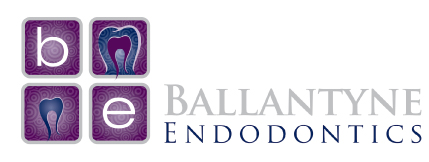What Can Be Done When a Tooth Breaks
Many people have nightmares about dental emergencies. Hopefully, you will never experience one, but a little knowledge can save your teeth if you do. To start, learn about what can be done when a tooth breaks.
Please note this article is purely for educational purposes. Knowing a few basics can empower you to seek quality care for yourself and your family.
A tooth may break in many ways, sometimes starting with just a tiny crack. For this reason, we will discuss the range, including cracks, fractures, and if a tooth completely breaks in two or more pieces. The best treatment will vary depending on the severity.
What Causes Teeth to Break?
Understanding when and why a tooth might break can help you in two ways. First, you may be able to use this knowledge to prevent it from happening. Second, you may recognize it and seek prompt dental care.
Sudden or chronic trauma might cause a tooth to break, fracture, or crack. Some examples include:
- Chronic tooth grinding may weaken teeth over time, and one may become fractured or broken.
- Tooth decay starts small and grows if left untreated. When a cavity gets big enough, it makes the tooth vulnerable to breaks, cracks, and fractures.
- Stress from poor tooth alignment may make some specific teeth vulnerable over time; this often coincides with other problems like tooth grinding.
- Accidents like sports injuries, car accidents, falls, or even violence may damage or break a tooth.
- Biting down on hard objects like olive pits, unpopped popcorn kernels, or bones can cause a break.
Signs You May Have a Broken Tooth
Depending on the severity of the break or fracture, you may or may now know. Here are a few possible symptoms beyond the obvious:
- An inconsistent pain that may come and go, especially with pressure, like when you bite or chew.
- Pain and swelling in your mouth around a tooth.
- New sensitivity to hot and cold foods and liquids.
- You may notice sharp edges on a tooth with your tongue.
- Pain or discomfort that is hard to pinpoint.
What to Do if You May Have a Cracked or Broken Tooth
Sometimes, you may know you have a broken tooth because you just experienced trauma and see the fragments. If so, consider calling 911, especially if you have had a head injury. In addition to your dental issue, a doctor may need to examine you for signs of a concussion or other serious injuries. In this case, please prioritize your overall health since a traumatic brain injury is severe and even potentially fatal. The staff at the ER may involve an endodontist or dentist who provides emergency care.
If your tooth broke, perhaps you accidentally bit a hard object, then collected the pieces. Contact a dentist or endodontist who provides emergency care. Since each break differs depending on whether it is a small crack or a full break, be sure to follow your emergency dental provider’s directions.
If you notice these or other concerning signs, make an appointment with your dentist. At the same time, it may sound like a simple diagnosis; sometimes, dentists have difficulty determining whether a tooth has a small crack or fracture. Be persistent and advocate for yourself.
In some cases, a specialist like an endodontist may be your best chance at getting an accurate diagnosis and treatment. An endodontist is a dentist who specializes in saving natural teeth through root canals and other restorative treatments. The first step for endodontic care would be a thorough examination. Your endodontist may use state-of-the-art imaging technology and some old-school tests to pinpoint the source of the pain.
What Can Be Done to Treat a Broken Tooth?
The most appropriate treatment varies depending on the size and severity of the break. Sometimes the treatment may be as simple as a filling if it is small and caught early enough.
People often associate veneers and crowns with cosmetic dentistry. In the case of cracks and breaks, they may be used to improve the appearance of your tooth after a break and provide protective reinforcement.
Deeper cracks may be letting harmful bacteria inside the tooth leading to pain, inflammation, and infection. In this case, a common filling isn’t adequate. The teeth have a tiny yet complex root canal system. Cracks and breaks below the gumline make the system vulnerable to bacteria and infarction. Often the best treatment is a root canal to deep clean the inside of the tooth and removes any damaged tissue in the tooth and root system. This may be the only alternative to losing the tooth to very deep cracks and breaks.
In some cases where the damage is too severe, even for a root canal, you may need to have the tooth extracted and replaced with an implant. Please note that damage from a crack, break, or fracture tends to grow when untreated. Seeking dental care as soon as possible reduces your risk of needing an extraction and implant. As endodontists, we strive to keep this from happening, but extraction is sometimes unavoidable.
If you have an untreated broken tooth, or maybe it was treated, but you are still in pain. Either way, an endodontist may be your best bet. Ballantyne Endodontics serves the Charlotte, NC, area community. Our team mixes the latest in dental technology, professional best practices, and deep compassion. We are united in our goal of saving natural teeth, even if they are deeply cracked, fractured, or broken.
Contact us today to schedule an appointment or to learn how to request a referral from your general dentist.

